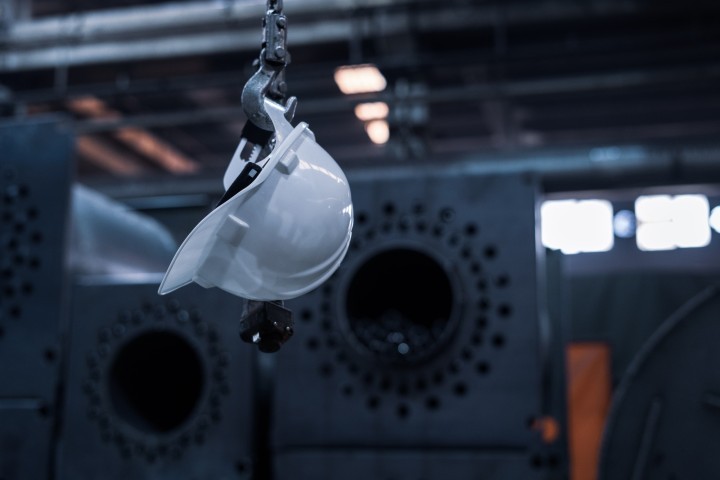Alarming figures show that 135 workers died in work-related incidents over the last year in the UK.
Imagine John, a dedicated construction worker with a wife and two kids at home.
One day, while working on a high-rise building, he slips off the scaffolding. His safety harness, which hadn't been appropriately inspected, fails.
His co-workers watch in horror as he falls to the ground. This tragedy, like 135 others in the UK last year, should have been preventable.
Are you ignoring your workplace safety obligations?
With unsettling statistics surrounding work-related fatalities in Great Britain over the last year - it’s worth asking whether you’re protecting your workforce from the most common causes of workplace fatalities.
Or are you simply crossing your fingers and hoping that you’ll get lucky?
In the pursuit of profits and productivity, safety can often take the back seat for businesses.
You’re busy. We get it.
But when you remember that behind each statistic was a person with family, friends and dreams - burying your head in the sand becomes difficult.
As well as this, from a purely financial standpoint, last year, there were an astounding 36.8 million working days lost due to work-related ill health and non-fatal workplace injuries.
So, can you still afford to take this shortcut? Probably not.
The most common causes of workplace fatalities
Let’s take a look at the three most common causes of workplace fatalities in 2022 / 23, according to new data from the HSE.
- Falls from heights
40 people died by falling from heights whilst at work last year. This makes it the most common cause of fatalities in the workplace for yet another year. - Being struck by a moving object
The second-highest number of workplace deaths was caused by being struck by a moving object. This resulted in 29 people losing their lives due to accidents at work last year. - Being struck by a moving vehicle
Finally, 20 lives were lost due to being struck by a moving vehicle, making it the third most common cause of workplace fatal injuries last year.
The industries with the highest death rates
Whilst accidents can occur in any workplace, certain industries are more prone to specific hazards due to the nature of the work involved.
Factors such as the working environment, the type of machinery or substances used, the intensity of the labour, and the different safety measures in place can create varying levels of risk.
The new data from the HSE show that workplace fatalities are most common in the following industries:
- Construction - 45 deaths
- Agriculture, Forestry and Fishing - 21 deaths
- Manufacturing - 15 deaths
- Transportation and Storage - 15 deaths
Workplace safety: Long-term hazards - Asbestos
But although immediate hazards like falls and moving objects account for most workplace fatalities, there are also long-term risks that you shouldn’t ignore.
One of the most insidious and dangerous of these is exposure to asbestos, a material that has left a troubling legacy in many industries.
The HSE has released crucial data on Mesothelioma, a type of cancer caused by previous exposure to asbestos:
In 2021, 2,268 people died from the disease. This is a fall of 302 compared with the 2,570 deaths in 2020 and substantially lower than the average of 2,520 deaths per year between 2012 and 2019. However, these are still devastating figures nonetheless. Additionally, they serve as a stark reminder of the importance of an ongoing workplace safety culture and Asbestos Sampling.
If you’re unsure whether your workplace contains asbestos, find out how we can help you here.
What is the long-term solution?
While immediate measures are necessary to tackle urgent safety concerns, long-term safety in the workplace needs to be addressed through a structured, comprehensive approach.
The best way to do this? By having regular Commercial Health and Safety Risk Assessments.
What are Commercial Health and Safety Risk Assessments?
Stick with us here. They might sound boring, but we're here to make them easy for you.
Commercial Health and Safety Risk Assessment systematically examine your workplace for potential hazards and risks.
These assessments are not a one-time event. Instead, they should be part of your ongoing safety efforts and regularly updated and reviewed to ensure they remain relevant to your business.
And yes, they are tedious, but they’re a legal requirement. So there’s no getting out of them. Failure to carry out and record the results of your assessments can result in hefty fines and investigations from the HSE.
Workplace safety is critical…
The truth is that workplace safety isn’t a static goal but an ongoing commitment. It isn’t just about ticking boxes or avoiding penalties. It’s about valuing human lives and recognising the lasting impact safety has on employee well-being and the success of your businesses.
The role of workplace safety measures has never been more urgent. And that's where we can help you.
Whether you need a hand uncovering hidden electrical issues, assessing fire risks, or conducting thorough surveys for asbestos - the Focus On Testing team is on hand to offer a strategic approach to a safe working environment.
Curious about how we can help your business get up to scratch? Give us a call on 0330 088 4597.


















